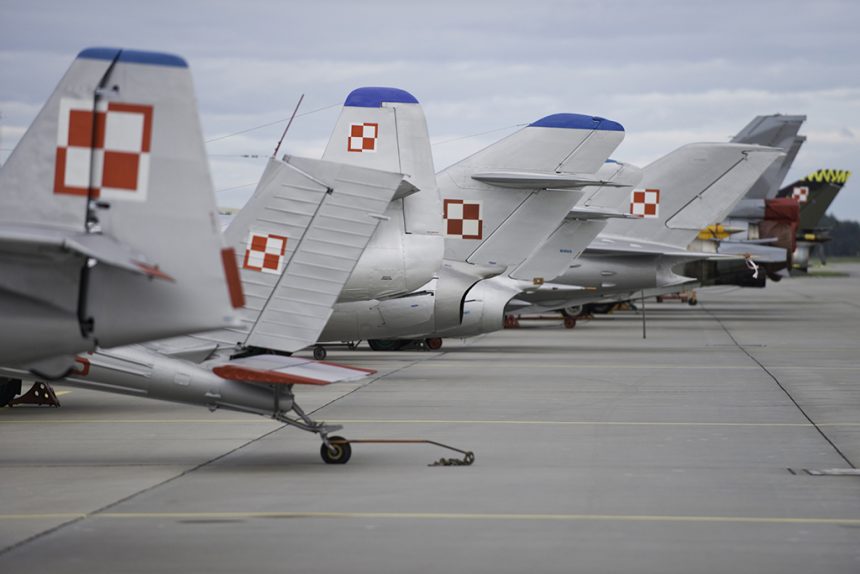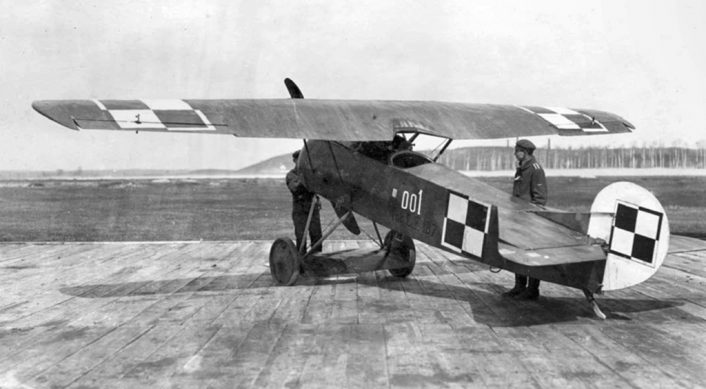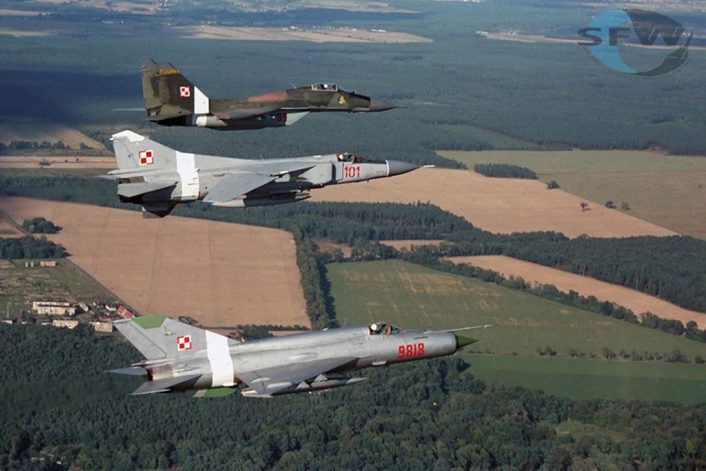In 2018 the Polish Air Force is to celebrate its 100th Anniversary. Let’s celebrate the Service’s flamboyant and rich history through a series of articles.
It seems appropriate to start a series of articles covering the 100th Anniversary of the Polish Air Force with getting our readers acquainted with the circumstances related to the birth of the Polish Air Force’s equivalent of a “roundel”, that has been accompanying the Polish aviators throughout the last 100 years. Here we are referring to the white-red checkerboard which, as you probably know, is not round, contrary to the insignia worn by the aircraft of most air forces.
The story of applying national markings on aircraft dates back to WWI. The dynamic development of aviation per se, and of military aviation in particular, was the main factor that made it indispensable to introduce signs that would allow for quick and unambiguous aircraft recognition. The French were the first to introduce a roundel, back in 1913.
The history of Polish aviation actually began back in 1910, when the first aircraft was built on the territory that once belonged to Poland, which, for 120 years, belonged to the occupants: Germans, Russians and Austrians. The said aircraft was reportedly built in Cracow.
During WWI the storm of battles was going through the Central European land and it did not leave it unscathed. The Poles were often forced to join the armies of the invaders and occupants, which led to a situation in which in fact they were fighting for all of the parties to the conflict. Also in a role of the troops working within a newly established service – the Air Force.
The events during which Poland regained its independence are closely tied to the ending of WWI, on Nov. 11, 1918.
According to the bible of historians who are passionate about the Polish Air Force, “Polski Samolot i Barwa” [“Polish Aircraft and Color”], authored by Tadeusz Królikiewicz, the story of the checkerboard dates back to November 1918. This was also related to the process through which the Polish military was taking over the equipment and airfields left behind by the invaders. Frequently the Polish pilots were defecting (from Austro-Hungarian, German and Russian Armies to join the newly born Polish military), taking their aircraft with them. These airframes were later to become the cornerstone for the Polish military aviation. This also created a new problem: the use of aircraft markings which would designate their affiliation with the newly born state. The aircraft were sporting roundels of the former enemies, the camouflage schemes differed, the planes also featured personal badges of the pilots flying them.
Before the Polish checkerboard was ultimately selected as the designation of choice, the aircraft often featured spontaneously painted white-red graphic elements, following the national color scheme. Nonetheless the form of the symbols ranged from heraldic badges divided across (Warsaw squadrons), through white-red stripes (Lvov squadrons) with red Z letter placed in a white square to finish with (Cracow squadrons).
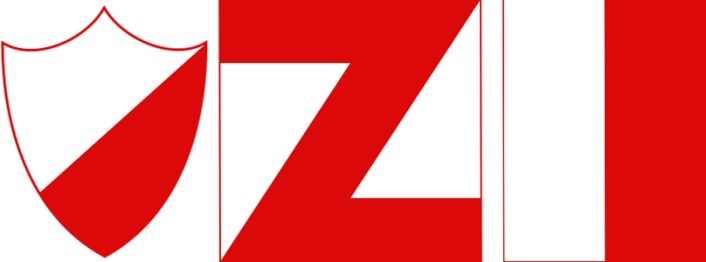
However, the white-red checkerboard was to ultimately become the sign of choice for the Polish aviation. It is usually claimed that the history of the symbol began with Lt. Stefan Stec – a Polish pilot flying for the Austro-Hungarian Army. On Nov. 15. 1918, Lt. Pilot Stefan Stec flew to Warsaw in his Fokker EV (D VIII), delivering a report from Lvov that was under siege at the time. His aircraft wore the personal badge of the pilot – a square divided into four symmetrical fields in contrasting national colors – white and red.
Stefan Stec was quite an experienced aviator who, when the war for the Polish independence began, had already scored a couple of aerial victories flying for the Austro-Hungarians during WWI. At the end of WWI, on Nov. 15. 1918, he went to Lvov. Operating from there under the Polish command, he conducted combat sorties delivering reports to the staff officers during the fights against the Ukrainians. On Apr. 29, 1919 ,Stec won the first air combat engagement in the independent Poland, downing an enemy plane.
In 1919, Stec was transferred to the Paris Ecole Superiore d’Aeronautique where he obtained an engineering degree. Following that Stec became one of the persons who drove the development of the Polish aviation industry. Stec died in an aircraft crash, on May 11, 1921.

On Dec. 1, 1918, the Chief of the General Staff of the Polish military, Div. General Stanisław Szeptycki, issued the order no. 38 also published as a Regulation on Dec. 7. 1918, within the Journal of Regulations of the Ministry of Military Affairs. The order read as follows:
“Polish military aircraft shall be, in the future, featuring, within the areas that were valid for this purpose so far, a square sign with width of 60 cm, divided into four equal fields. Upper left and lower right fields shall be of crimson color, lower left and upper right fields shall be white.”
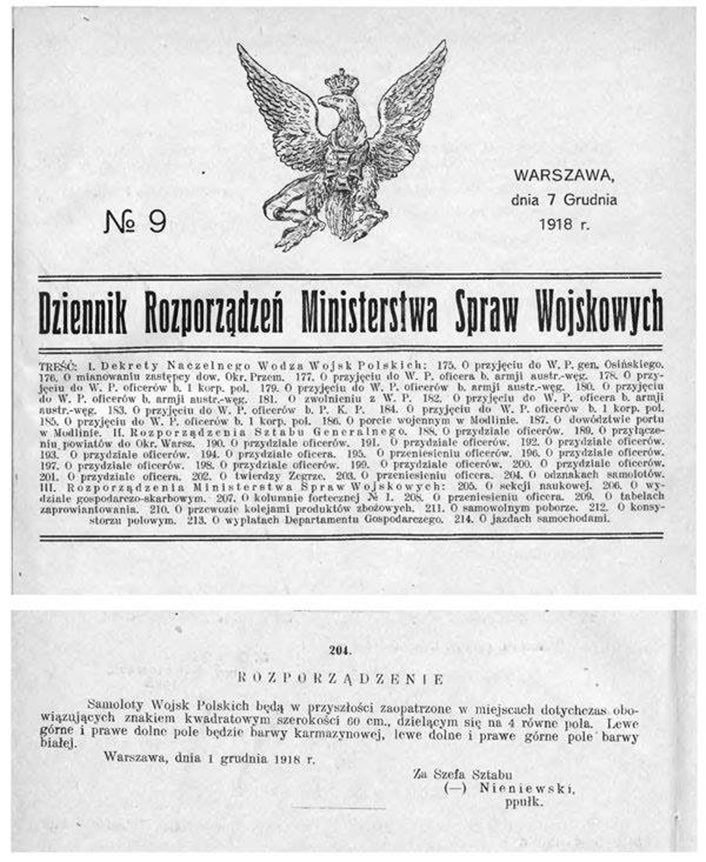
One may also wonder about the shape of the roundels used by most of the countries which, as the name suggests, were usually round, while the checkerboard took on a square form. Within his work, Królikiewicz suggests that this had reasons which were pragmatic for the most part. The new symbol could be easily painted on the wings and fuselages of the aircraft. The square shape was better suited to be placed over a myriad of markings on German, French, British or even Italian aircraft that became a part of the Polish Air Force.
Initially, the roundel was painted in a way that it covered the whole width of fuselages, wings and vertical stabilizers. The checkerboard layout’s interpretation also varied. Even though the aforesaid regulation was quite unambiguous defining the matter. Back in 1921, Manual No. 15 of the Air Force (General Technical Conditions for the Aircraft) introduced changes to the “checkerboard’s” layout, as reverse-color frame had been added to the primary colors of the symbol.
Further changes were introduced by the President of the Republic of Poland on Mar. 13, 1930, formally approving the checkerboard as a means for recognition of the Polish military aircraft, on the basis of a decree “Regarding the issue of flag and aviation markings”. The very same decree also regulated the “frame” of the checkerboard, as it was to have a width following ratio of 1:5 in comparison with the length of the square sides. In essence, the sign in this form remained in existence for another 70 years, until 1993.
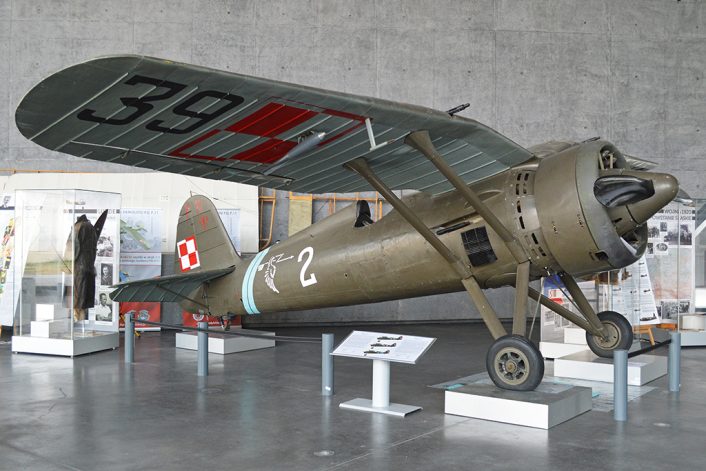
Two things are worth of noting. In the 1930s the lower portion of the wings of the aircraft featured checkerboards painted solely with the use of red color. The white color was replaced by the color of the airframe: this was the beginning of what can be compared to today’s low-vis aircraft markings. Another rule which was also quite significant was that small checkerboards were painted on top of the wings, in order to deform and camouflage the aircraft shape.
During WWII, the checkerboard also remained present on every frontline around the world at war, maintaining the reputation of the Polish aviators flying in the foreign air forces. Both in the East and West fronts, the aircraft used by the Poles were marked with the allied markings, supposedly for safety reasons. However, during the French campaign of 1940 the aircraft were wearing checkerboards or fusion of the checkerboard and the French marking. Then, extra “checkerboard” was painted on the aircraft, usually in the nose area – in cases of the Eastern and Western fronts, as well as in case of the Battle of Britain – the best known episode of the Polish WWII aviation.
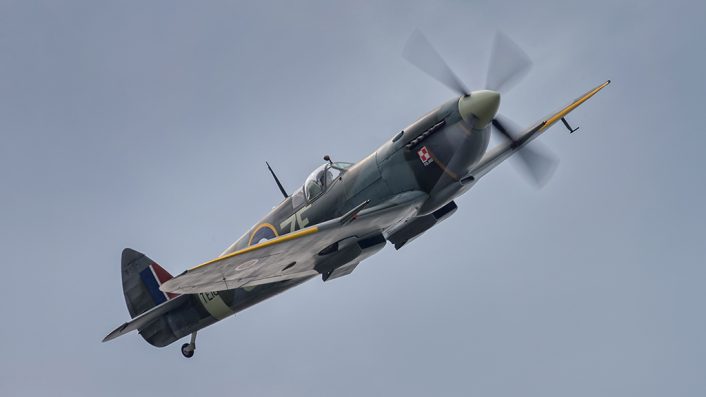
In the postwar period the communist authorities were not bold enough to replace the checkerboard with a red star – as happened in Romania, Bulgaria or Hungary. The checkerboard was painted on the vertical stabilizers, fuselage, and on the bottom part of the wings. The form of the marking remained unchanged until 1993, when the order of the fields was switched. The argument here was to recover the heraldic correctness of the checkerboard. Obviously, some exceptions did happen, throughout the several years of the symbol’s existence. There are some photographs depicting aircraft wearing the checkerboards without the white fields, or with the colors switched. This may be explained as an effect of errors emerging after overhauls were carried out abroad or simply as a ramification of human error.
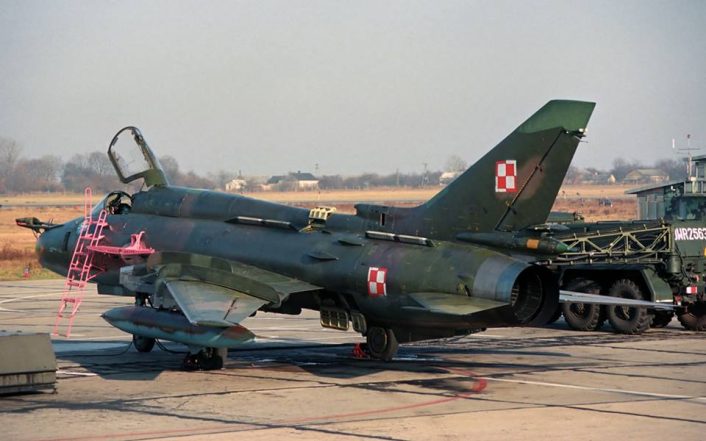

Furthermore, the Act assumes that the checkerboard shall be placed on both sides of the vertical stabilizers (or on the external side, if the aircraft uses two surfaces as such) and on the bottom part of the wings. Back in 2012, extra regulations were introduced. According to the new legal framework, the symbol was also to be painted on the top of the wings. In case of the helicopters the checkerboard is usually placed in the back section and on the bottom of the fuselage. The edges need to be parallel to the longitudinal axis of the aircraft. It is permissible to place the checkerboards on moving surfaces too, this possibility was used in case of the Polish Fitter. In this case, there is one more condition – the checkerboard must be placed, in its entirety, on the moving surface. When the checkerboard is placed on white or gray surface, the symbol needs to be distinguished from the background by a gray surface, the width of which is defined as 1/6th of the dimension of the frame stripes of the checkerboard.
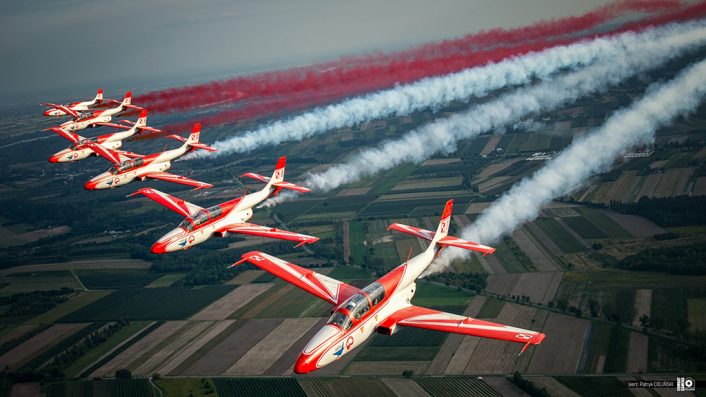
Noteworthy, the Polish law does not envisage any option of using low-vis markings on the Polish military aircraft. However, back in the past markings as such were used in case of the W-3 helicopter that was operated by the Polish GROM special forces unit.
A symbol which is similar, but not identical to the original checkerboard, is also used by the Border Guard aviation. It is a roundel, divided into four fields, identical to the ones in case of the military checkerboard. The whole round symbol is placed on green, square background. The Border Guard is a civil service, and thus it cannot utilize military markings. Back in the past similar symbols were proposed to be used in case of aircraft used by other uniformed services, with the background color being the differentiating feature. Police was to use blue, and fire service was to use red background. However, besides the border guard, the symbols in question were never used. Paradoxically, the Border Guard checkerboard features the historically original color layout.
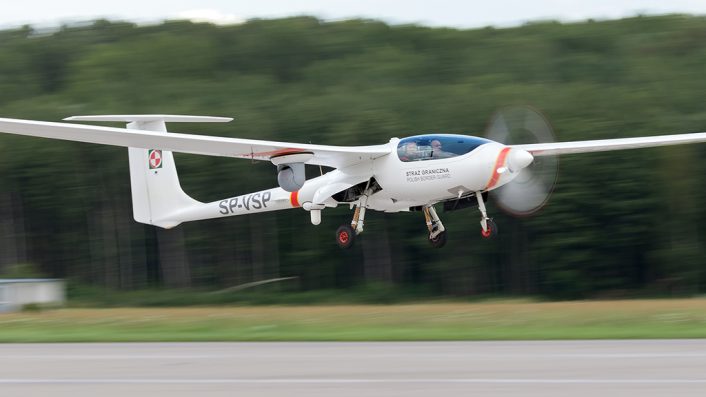
And finally, another interesting fact worth of mentioning is that during the Sochi Winter Olympics, Kamil Stoch, a Polish ski jumper, with an authorization issued by Czesław Mroczek, the Deputy Minister of Defense, used the checkerboard on his helmet, also winning the Olympic ski jumping competitions on Feb 9. and 15.
We hope that this article brought you closer to knowing the history of the Polish Air Force. Expect the next episode in February.
Written with Michał Wajnchold.
Top Image Credit: Michał Wajnchold


